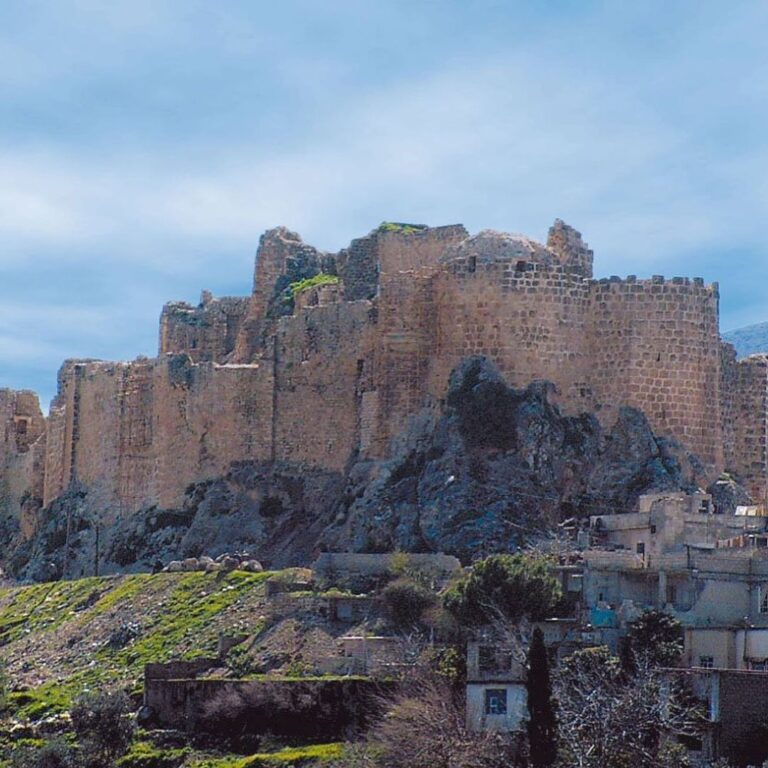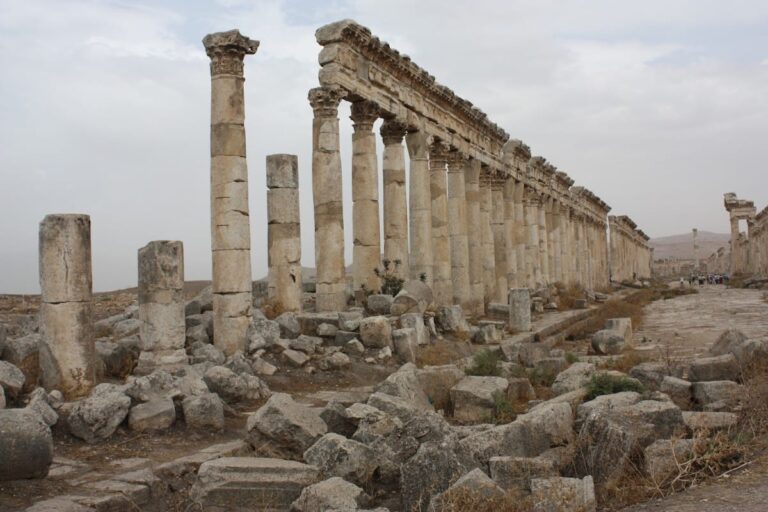Hama Castle: A Historic Fortress in Syria
Visitor Information
Google Rating: 4.4
Popularity: Low
Google Maps: View on Google Maps
Country: Syria
Civilization: Unclassified
Remains: Military
History
Hama Castle is located in Hama, Syria, and stands on a large earthen mound, or tell, on the western bank of the Orontes River. Its origins trace back to the Seleucid period when the city was known as Epiphania, marking the earliest recorded fortress construction at the site. This initial stronghold reflected the strategic and administrative needs of the Seleucids in the region.
Following the Seleucid era, the castle came under Roman control and maintained significance during their rule. Early in the Islamic expansion, Abu Ubaidah ibn al-Jarrah famously took control of the fortress around 18 AH (approximately 639 CE), signifying its importance during the rapid Muslim conquests. Over subsequent centuries, Hama Castle’s control shifted through a succession of powers, including the Qarmatians in 291 AH (904–905 CE), the Mirdasid dynasty, Seljuks, Zengids, and eventually the Ayyubids, each leaving their mark on the fortress and the city it guarded.
In 1157, a powerful earthquake severely damaged the castle, necessitating its reconstruction. The Zengid leader Nur ad-Din Zangi undertook significant rebuilding efforts, restoring the fortress’s defensive capabilities. Later, after the Mongol destruction of 1258, Sultan Baibars of the Mamluks orchestrated further repairs, underscoring the castle’s continuing military importance during the medieval period.
The turning point for Hama Castle came in 1401 when Timur, the Central Asian conqueror, ordered the demolition of the fortress after ensuring the city’s safety. This act left the castle largely in ruins. Under Ottoman administration, the fortress declined in strategic value and gradually fell into decay, marking the end of its active military role. Archaeological research in the 20th century, led by a Danish team headed by Harold Ingholt between 1931 and 1938, verified the site’s continuous occupation, revealing layers that chronicled human activity from the 5th millennium BCE through the Mamluk era.
Remains
Today, the most visible remnants of Hama Castle consist of a stone retaining wall, or revetment, that circles the earthen mound upon which the fortress once stood. This sturdy enclosure highlights the castle’s adaptation to the tell’s natural elevation, providing a fortified base for the structures above. Portions of these stone walls remain intact, offering a glimpse into the castle’s defensive layout.
Excavations uncovered a basalt stone altar within the site, suggesting the presence of ceremonial or religious practices during some phase of the castle’s occupation. Nearby, a staircase lined with stone lions was discovered, indicating decorative efforts to enhance the fortress’s approach and perhaps to symbolize protection or power.
Archaeologists also found a variety of pottery vessels and pieces of jewelry scattered throughout the layers of the site. These artifacts reflect the diverse cultural groups and eras that have inhabited the castle’s grounds over the millennia, each contributing to its rich historical tapestry.
Historical accounts once compared the fortress’s overall design to that of Aleppo Castle, hinting at similarities in layout and architectural style. While detailed plans or dimensions have not survived, this comparison places Hama Castle within a broader tradition of Syrian military architecture.
Currently, the top of the tell is covered with trees and functions as a public park, preserving the archaeological remains beneath a landscaped setting that balances green space with cultural heritage.










